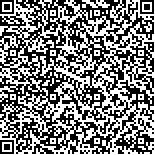下载中心
优秀审稿专家
优秀论文
相关链接
摘要

将机载LiDAR(Light Detection and Ranging)与高光谱CASI(Compact Airborne Spectrographic Imager)数据融合,充分利用垂直结构信息和光谱信息进行温带森林树种分类,并与仅用高光谱数据的分类结果相比较,评估融合数据的树种分类能力。结合样地实测数据,首先用LiDAR获得的3维垂直结构信息对CASI影像上的林间空隙进行掩膜,提取林木冠层子集;然后对冠层子集分层掩膜,利用光谱曲线的一阶微分及曲线匹配技术,实现各树种训练样本的自动提取;利用SVM分类器对两种数据分类并比较精度。结果表明,融合数据的树种分类总体精度和Kappa系数(83.88%,0.80)优于仅使用CASI数据(76.71%、0.71),优势树种的制图精度为78.43%—89.22%,用户精度为75.15%—95.65%,整体也优于仅使用CASI的制图精度(68.51%—84.69%)和用户精度(63.34%—95.45%)。结果表明,机载LiDAR与CASI基于像元的融合对温带森林树种识别的精度较仅高光谱数据有较大提高。
This paper presents a method for the fusion of the airborne Light Detection and Ranging (LiDAR) Canopy Height Model (CHM) and the hyperspectral Compact Airborne Spectrographic Imager (CASI) data (CASI+CHM) to take advantage of vertical structural and spectral information as well as to evaluate the classification capacity of fusion data. Tree species in a natural temperate forest were successfully identified and compared with CASI data. Based on the vertical information obtained by using LiDAR, forest gap pixels were masked, whereas canopy pixels were acquired. In addition to the mean heights of tree species, training samples were extracted using the first derivative of a spectral curve with curve matching technology. Classification accuracies were compared between the fused data and data without CHM. The results show that the total accuracy and kappa coefficient (83.88%, 0.80) of CASI+CHM is better than those of CASI data alone (76.71%, 0.71), with the mapping accuracy and user accuracy of dominant species reaching a range of 78.43%—89.22% and 75.15%—95.65%, respectively. These results are also better than those obtained through CASI data alone (68.51%—84.69% and 63.34%—95.45%). The proposed method for tree species identification in a natural temperate forest is feasible with fused LiDAR and hyperspectral data.

